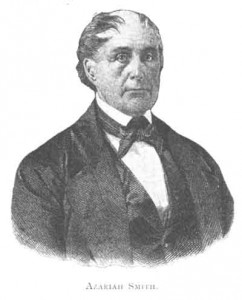Form printing by W. J. Silver in New York
Browsing the pages of The Mormon the other day, I came across the folowing advertisement1:
Since its a little blurry, here is the text:
ADVERTISEMENT.
TO PRESIDENTS OF CONFERENCES OR BRANCHES.
W. J. SILVER, (Box 5057, Post Office, New York,) has for Sale—
Blank Licences, per 100, $0.75
. ” Certificates, per 100, 0.75
. ” ” for a less number, each 0.01
Conference Notices, per 100, 1.00
Ruled Books for District Visitors per dozen, 0.30
Festival Tickets, per 100, 0.25
N.B.—Licences will be forwarded to the written order of a President of a Conference only.
Certificats to the written order of the President a Branch or Conference only.
Terms, Invariably, Cash, including expenses of carriage, if any, to accompany the order.
——-
Perhaps this ad is mundane, simply a necessary element of running an organization like a church. But I’m not convinced that any element can be truly unimportant, given the relative lack of information about this time in Mormonism in New York City. Some of the things mentioned in this ad I believe I understand. Others I’m not so sure.
- “Advertisement.” The Mormon, v3 n15, p4, 30 May 1857 ↩


